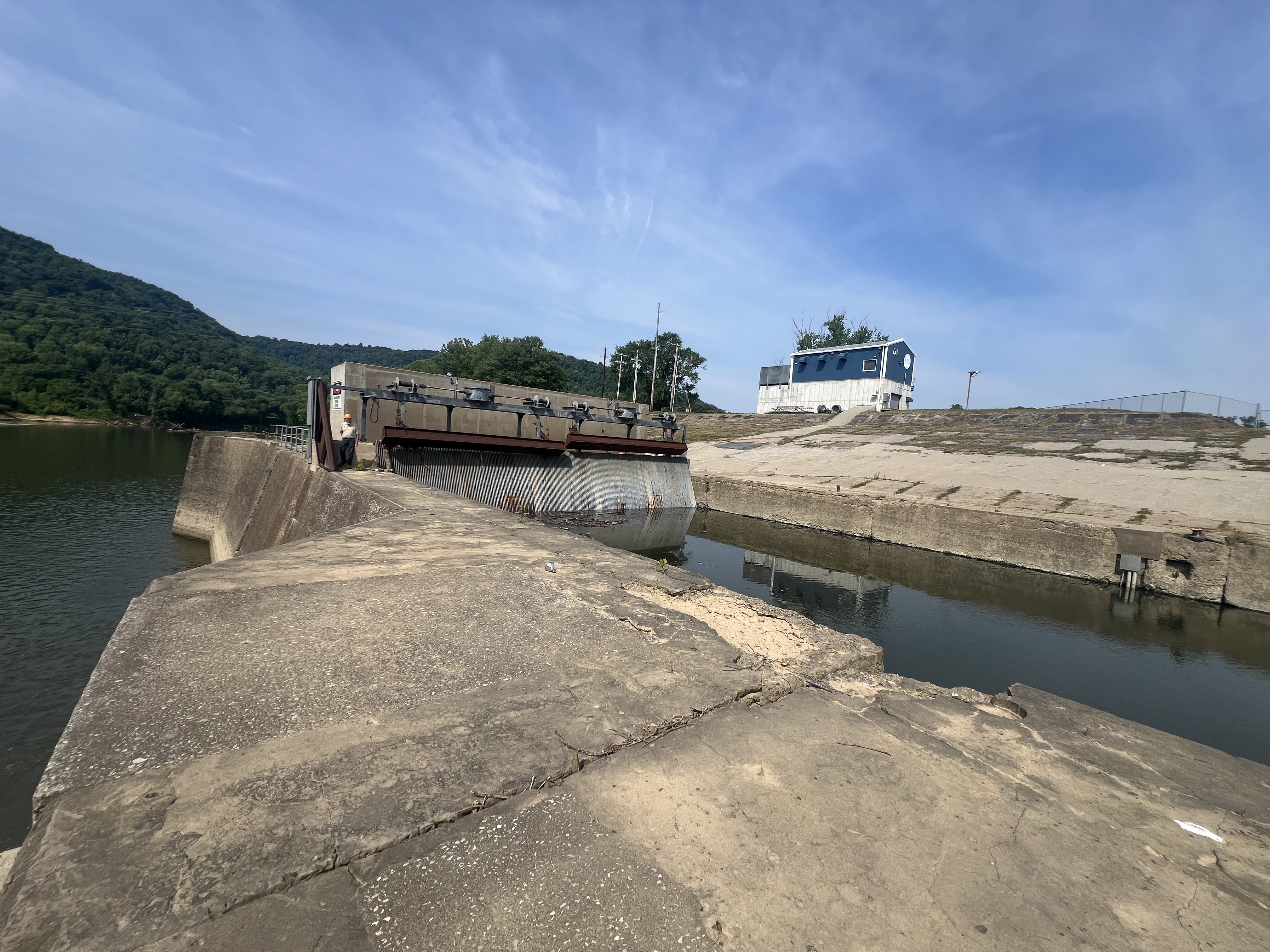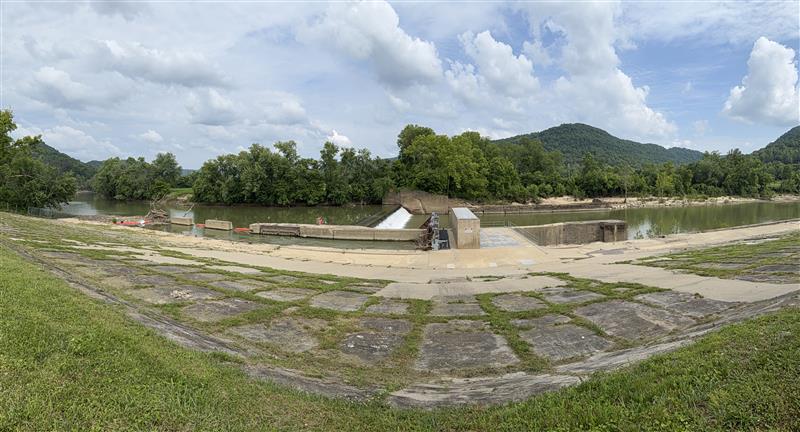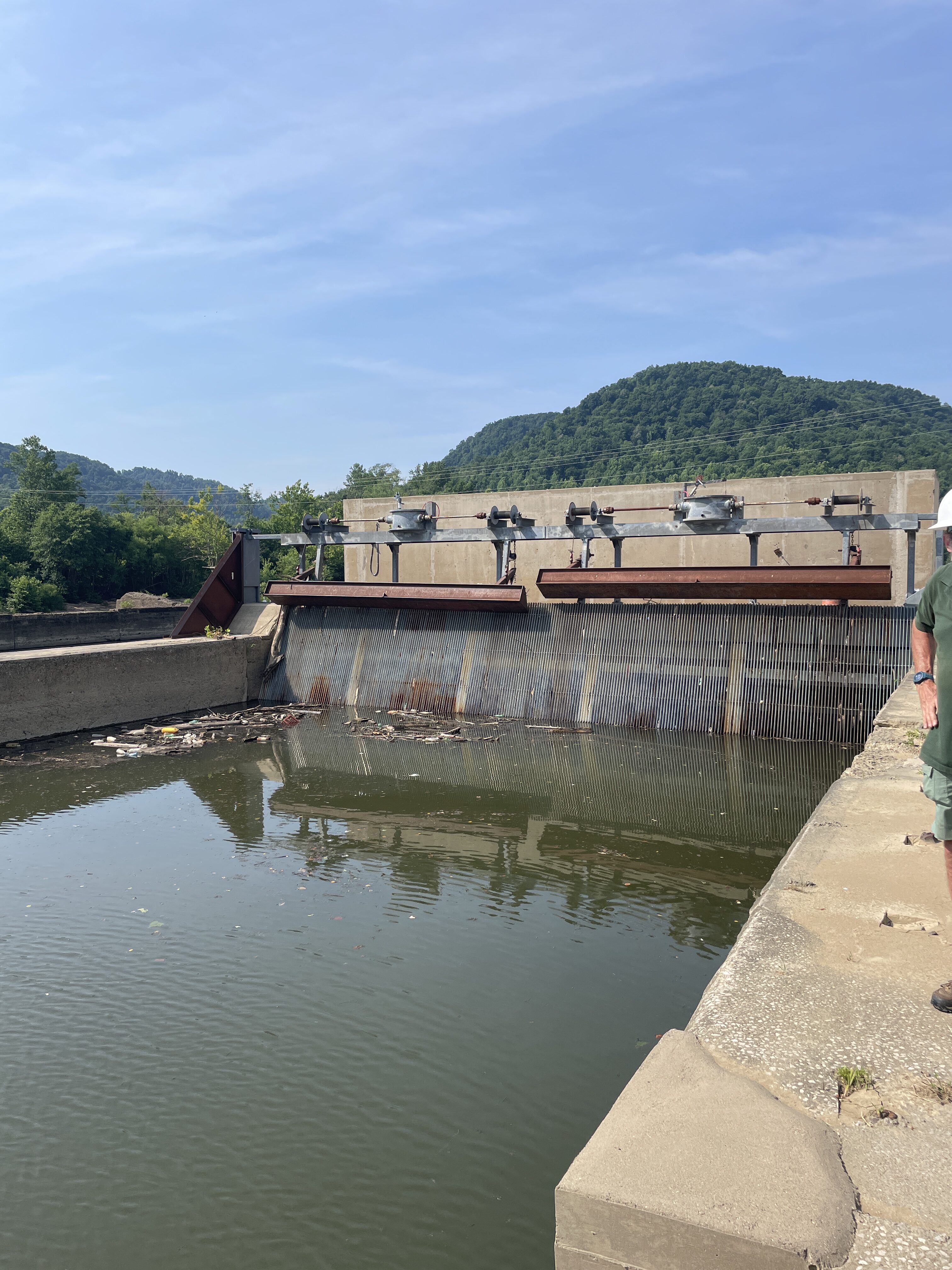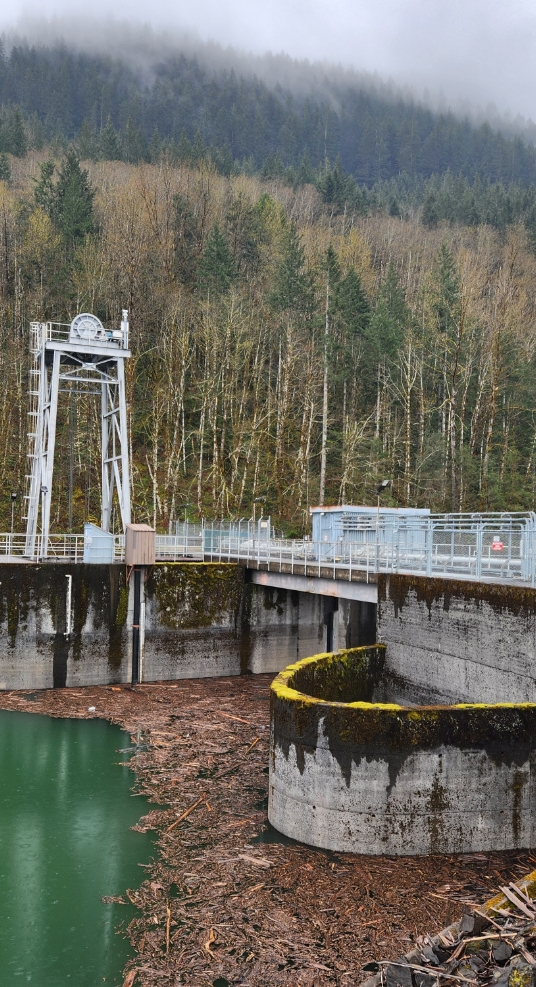Appalachian Hydro Associates sought to prove that small, low-head hydro at existing non-power dams could be technically, environmentally, and financially viable by repurposing abandoned Kentucky River lock chambers. Working with Berea College as an investor, the client needed a resilient, flood-tolerant powerhouse solution that minimized civil costs, protected equipment from extreme river events, and generated dependable, long-term revenue to advance the College’s sustainability and access mission.
Working with Appalachian Hydro Associates, Kleinschmidt evaluated the lock’s tight 52‑ft chamber, river hydraulics, and constructability limits, advancing three retrofit powerhouse concepts. A five‑unit vertical Flygt submersible layout offered the best mix of energy output, simple installation, flood tolerance, and cost. We confirmed the historic lock could accept new loads through structural and geotechnical stability analyses and then delivered an integrated civil, mechanical, electrical, and controls design for the fully submersible powerhouse plus an elevated, flood‑secure control building. Kleinschmidt prepared the Supporting Design Report (SDR), Quality Control Inspection Plan (QCIP), and Temporary Construction Emergency Action Plan (TCEAP); completed a no‑rise hydraulic analysis demonstrating no adverse effect on the mapped 100‑year flood; and provided construction and commissioning engineering support through start‑up.
Reusing the existing lock chamber let the team avoid building a large cofferdam and kept civil work tight, which helped small, low-head hydro economics pencil out. The fully submersible Flygt units and flood-tolerant civil design protect equipment through the Kentucky River’s frequent high water events, reducing outage risk and long-term O&M cost. Variable speed performance across a range of flows supports efficient energy capture and dependable generation for the regional grid. Beyond power production, the project generates revenue that advances Berea College’s access-driven educational mission and serves as a hands-on learning platform for students. Success at Lock 12 provides a replicable, lower-impact pathway for adding clean, firm hydropower at other inactive locks along the Kentucky River system (e.g., Locks 9, 10, 11, 13, and 14), expanding rural renewable generation without new impoundments.

Regional Vice President
Steve Layman, Ph.D.
“I really enjoy the energy and collaborative spirit for sound science and creative solutions that protect the environment here at Kleinschmidt.” Steven Layman has over 35 years of hydropower-specific experience and is Kleinschmidt’s Southeast Region Vice President. Steve is a senior aquatic ecologist and fisheries biologist who specializes in leading ecological assessments and managing project...




